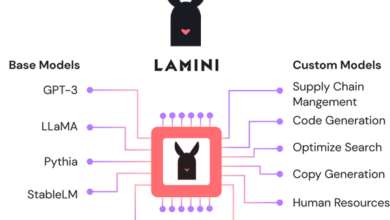“Generative AI In Practice,” A Good Book. Just Ignore The Buzzword

Artificial Intelligence
I haven’t been sent a book to review in a while, so I decided to risk this one. In a surprise, it’s a book that can be heartily recommended. “Generative AI in Practice,” Bernard Marr (Wiley, ISBN: 978-1-394-25424-8) is good as long as you ignore the first word.
Generative AI in Practice
Let’s start with the soapbox. I’ve been avoiding anything with the word “generative” in it since that became the buzzword for the current hype cycle. It has been presented as some revolution in artificial intelligence (AI) because too many people love the concept of revolution. The reality is that evolution happens far more often. What ChatGPT and other large language models showed is that the power of the cloud means far more complex deep learning systems have advanced the technology. That’s it. However, stick a cool adjective before AI, and you can ask for more money.
What’s very good about the book is that it’s a very nice overview of the state of AI in business. Ignore the hype and it’s excellent for that purpose.
As usual with these books, skip the first couple of chapters. The author doesn’t understand AI’s history and tries to claim that “tradition” AI followed existing rules, using chess as an example. However, Go systems show that earlier systems were already coming up with tactics people hadn’t thought about but worked. He then tries to imply that deep learning, or neural networks, somehow magically appeared with ChatGPT and the generative add-on. That’s not new. As I’ve mentioned over the last decade, what has changed is the power of servers in data centers – the cloud. We’re able to run much more complex models much faster, so of course things have advanced.
I also laughed at the claim that, with the modern systems, “you don’t need to be a data scientist to interrogate data.” Really? Not only has earlier AI done that, business intelligence (BI) systems have been doing that far longer.
Ok, off of the soapbox and onto why the book is enjoyable.
Chapter four has some standard things, but one key element that’s critical is a point he has made that has been covered elsewhere for a few years. The plan is for businesses to use AI to supposedly take over the menial, beginning tasks that many industries have (insurance, for one example). The claim of management is that leaves time for people to handle the more complex tasks. However, how is a new employee to learn without starting on the simpler tasks and working up to the complex ones? It’s clear that the CxO suite and shareholders want to automate everything, but how will the transition be handled so that we can train employees while they’re still needed?
Chapter five continues with another critical issue. Marr is the first author who aims at business management who I’ve seen directly address the major employment disruptions that will happen. The only quibble I have is that he doesn’t go far enough, again limiting AI to not much further than we understand it in the present day. Yes, even research scientists will be replaced, as chapter 13 indicates with what’s already happening with molecular research for new compounds.
All the chapters in Part 2 are set for skimming. Each takes a business sector and describes how AI is advancing those arenas. Again, ignore how he keeps pointing to generative. He’s a self-proclaimed “futurist” and “influencer,” so he has to push the hype curve like crazy. Still, while doing that he gives a great overview of what’s already happening and what can happen with AI in the sectors.
Any manager would benefit not only from the specific examples in her own industry, but in understanding the wide impact AI is having on business. The power of systems is going to change how our economies, local to global, work. This book doesn’t address regulations and major societal issues that need to be addressed as more work is automated. However, for an excellent overview of the state of the art for AI in business, it’s a valuable, quick read.



